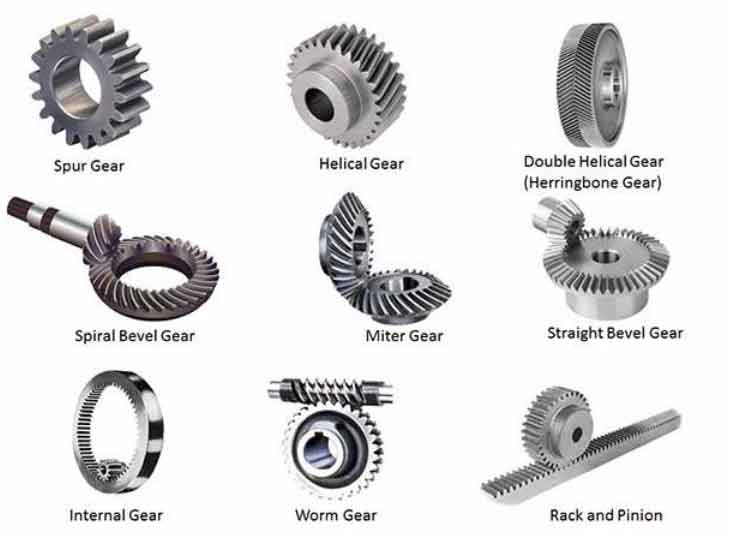Helical gears and miter gears are two different types of gears commonly used in mechanical systems. While both serve the purpose of transmitting rotational motion and power between shafts, they have distinct characteristics and applications. Let’s compare helical gears and miter gears in terms of their design, advantages, disadvantages, and typical uses.

Helical Gears:
- Design: Helical gears have teeth that are cut at an angle to the gear axis, forming a helix shape. This helical angle allows for gradual tooth engagement, resulting in smoother and quieter operation compared to spur gears.
- Advantages:
- Smooth operation: The gradual tooth engagement reduces noise and vibrations, leading to smoother operation.
- Increased load-bearing capacity: The helical tooth arrangement allows for larger contact areas between the teeth, resulting in higher load-bearing capacity compared to spur gears.
- Transmitting power between parallel or non-parallel shafts: Helical gears can transmit power between parallel shafts as well as shafts that are slightly offset or non-parallel.
- Disadvantages:
- Axial thrust: Helical gears produce axial thrust due to the helix angle. This requires additional thrust bearings to counteract the axial forces.
- More complex design and manufacturing: The helical tooth shape requires more intricate machining and manufacturing processes compared to spur gears.
- Typical uses: Helical gears are commonly used in various applications, including automotive transmissions, industrial machinery, and power transmission systems that require high load capacity and smooth operation.
Miter Gears:
- Design: Miter gears, also known as bevel gears, have teeth that are cut on conical surfaces. The teeth are oriented at a 90-degree angle to each other, allowing for the transmission of motion between intersecting shafts.
- Advantages:
- Transmitting motion at right angles: Miter gears are primarily used for transmitting motion between shafts that are oriented at a 90-degree angle to each other.
- Compact and efficient: The compact design of miter gears allows for efficient power transmission in tight spaces.
- Versatility: Miter gears can be manufactured with different ratios, making them suitable for a wide range of speed and torque requirements.
- Disadvantages:
- Limited load-bearing capacity: Miter gears have smaller contact areas compared to helical gears, limiting their load-bearing capacity.
- Higher noise and vibration levels: The abrupt tooth engagement in miter gears can result in higher noise and vibration levels compared to helical gears.
- Typical uses: Miter gears find applications in various equipment and machinery, such as hand tools, printing presses, woodworking equipment, and other devices that require motion transmission at right angles.
Helical gears are suitable for transmitting power between parallel or non-parallel shafts, providing smooth operation and higher load-bearing capacity. Miter gears, on the other hand, excel at transmitting motion at right angles, offering compactness and versatility in tight spaces. The choice between these gear types depends on the specific requirements of the mechanical system, such as the shaft orientation, load capacity, space constraints, and desired operational characteristics.
